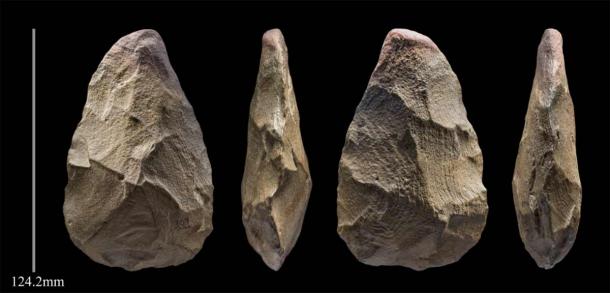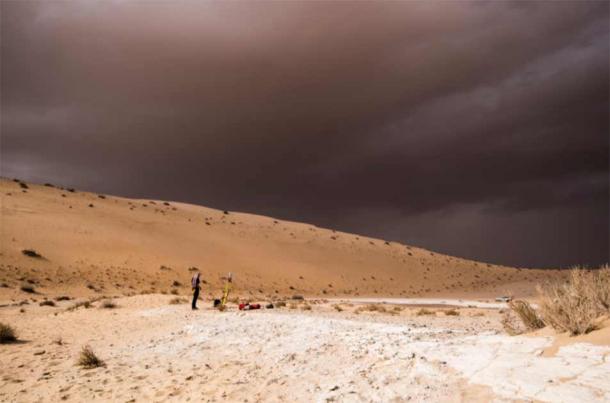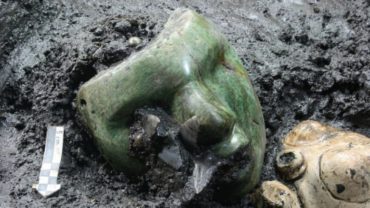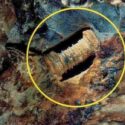Climate Change Drove Early Humans To Arabia Several Times Over Last 400,000 Years, Study Finds
According to a succession of ancient lake beds uncovered there, the currently dry, barren deserts of Saudi Arabia were once lush, green wetlands filled with life.
It reveals how temperature change over the past 400,000 years has allowed species to thrive in Arabia at different times, but it also hints at how and when people may have migrated out of Africa.
The question of when and how modern and archaic people initially left Africa has long been discussed.
The Arabian Peninsula has long been regarded as the only land bridge connecting Africa and Eurasia. While today’s climate in this region is generally hot and arid, this has not always been the case.

A team of scientists has begun to narrow down the windows of opportunity for ancient humans to move out of – and then back into – the African continent by studying old lake beds preserved in the Saudi Arabian deserts at locations known as Khalil Amayshan 4 (KAM-4) and Jubbah Oasis.
Dr. Tom White is the Museum’s Senior Curator of Non-Insect Invertebrates. He’s worked on research into these ancient lakes and the creatures that lived in them, revealing that they were once permanent features that served as rest stops for various fauna, including nomadic hominins.
‘One of the most interesting things about the KAM-4 site is that it’s four lakes stacked on top of each other, rather than simply a single lake series within an interdunal basin,’ Tom explains. ‘Such long sequences are quite rare in locations like Arabia, and they offer a once-in-a-lifetime opportunity to see patterns over extended periods.’
‘Another striking feature is that each of these ancient lakes is linked to various stone tool assemblages, indicating that different populations and probably even hominin species arrived at KAM-4 at different times.’
Tom and his colleagues used the KAM-4 sequences to illustrate when the Arabian Peninsula’s deserts were wetter and thus more hospitable for humans and other creatures traveling through.
Migration paths that differ
Modern humans are not the first hominid species to migrate out of Africa and spread over the globe. According to fossil evidence, several separate lineages made it as far north as the United Kingdom, as far east as China, and possibly even as far as the Southeast Asian islands.
The natural route for these pioneering populations, and subsequently our wandering forefathers, was to pass through what is now Saudi Arabia. The question is whether they accomplished it by crossing the peninsula straight or by hugging the shore and going around it.

‘Arabia has been a major stumbling block for human expansion and back into Africa,’ Tom explains. ‘And it’s not just people who had migrated in and out of Arabia over the previous few million years when the conditions were perfect.’
Freshwater scarcity is one of the most severe problems. Furthermore, the region’s current arid climate means that fossils that could answer these concerns are rare and far between.
However, in northern Saudi Arabia’s Nefud Desert, geologists discovered a succession of ancient lake beds known as palaeolakes. Each palaeolake spans the last 400,000 years and is piled one on top of the other.
‘We now have a chronology for episodes of desert greening,’ Tom explains. ‘Each lake indicates a reasonably lengthy, steady period of climate in which conditions in the Arabian Peninsula’s interior were not hyper-arid, but more akin to the African savannah.’
‘We know the lakes were permanent because they supported species such as freshwater mollusks and hippopotamus, which can’t survive without constant freshwater.’
Permanent lakes were found in the Nefud at least five times over the last half-million years, according to the KAM-4 lake sequence. The first of these ‘green windows’ was 400,000 years ago, followed by 300,000, 200,000, 130-75,000, and 55,000 years ago.
The study also provides some of the first evidence for the presence of hominin species on the Arabian Peninsula.
Multiple hominid species meet at a fork in the path.
What’s more remarkable is that each of these five palaeolakes has its own set of stone tools, implying that people arrived in the area from various directions and sources.
While the particular manufacturers of these tools cannot be identified due to the lack of human bones, a larger picture of cultural and technological evolution has formed. The first two lakes are linked to Lower Palaeolithic Acheulian ‘handaxe’ technology, generally associated with earlier human species.

The latter three lakes are linked to various Middle Palaeolithic stone flake-based technologies related to more modern species, such as Neanderthals and Homo sapiens.
This diversified collection of stone tools shows that multiple hominin groups, and possibly even separate hominin species, were migrating into the region at different times. However, it’s still impossible to say who moved when and when.
‘The most important aspect of these findings is that they allow us to begin filling in gaps in the hominin map,’ Tom explains. ‘There’s a lot we don’t know about human evolution, especially about the possibility for interactions between different hominin species, but we can now see when things could have happened.’



